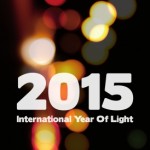- This topic has 8 replies, 3 voices, and was last updated 9 years, 11 months ago by
 Shahid.
Shahid.
-
AuthorPosts
-
-
October 27, 2015 at 7:07 am #27125
 Dr. Dhiman KakatiParticipant
Dr. Dhiman KakatiParticipantHi all,
While designing a fiber transmission system which detection scheme is advantageous i.e. coherent or non-coherent detection if we consider the case of long distance transmission. let us consider the DQPSK and 16 QAM, which among these two will give more long distance transmission or distance of transmission does not depend on modulation scheme. I am looking for theoretical concept. i want to no which modulation scheme provide more immunity to fiber attenuation and dispersion.Thanks.
With Regards
-
December 9, 2015 at 12:22 am #28562
 alistuParticipant
alistuParticipantHi Dhiman,
Theoretically, for higher order modulations the decision boundary in constellation plane is smaller. Therefore, more power should be used to achieve the same BER. This extra power may cause nonlinearities to step in and corrupt the signal. Therefore this way you may be limited using higher order modulations for long distances.
Regards
-
December 9, 2015 at 4:32 am #28571
 Dr. Dhiman KakatiParticipant
Dr. Dhiman KakatiParticipantI agree to you Alistu, I found that in case of transmission distance DQPSK is more advantageous than the 16-QAM as it has more decision boundary so it will provide more transmission distance. on the other hand 16-QAM is good for higher bit rate but not for higher transmission distance as the constellation points are closer. Thaanks Alistu for the reply.
Regards,
Dhiman-
December 9, 2015 at 5:17 am #28574
 alistuParticipant
alistuParticipantYou’re welcome Dhiman. A compromise between the two can also be used in optical systems, especially in future passive optical networks in my opinion, where the reach is expected to be longer and the number of subscribers increased compared to the prevailing optical access systems.
Regards
-
December 9, 2015 at 5:36 am #28577
 Dr. Dhiman KakatiParticipant
Dr. Dhiman KakatiParticipantHi Alistu, The sub carriers you have mentioned in the above comment, is it the same as that of OFDM or its multiplexing of carriers, Which one would be beneficial.
Regards,
Dhiman -
December 9, 2015 at 6:21 am #28579
 alistuParticipant
alistuParticipantI have used the word “subscriber” in my above comment. The word “user” is another word that is commonly used instead of “subscriber” in the papers. Of course, in passive optical network proposed schemes based on OFDMA technique (and not in OFDM), sometimes each subscriber has their own subcarrier.
-
December 9, 2015 at 9:36 pm #28637
 Dr. Dhiman KakatiParticipant
Dr. Dhiman KakatiParticipantThanks for your kind reply, Now to be more clear regarding this can you please refer me any design or paper which will help me to better understand this.
Regards,
Dhiman -
December 10, 2015 at 1:51 am #28638
 alistuParticipant
alistuParticipantYou’re welcome. Indeed! Please refer to the paper “OFDMA-PON for future generation metro-access networks” by J.M. Senior in which diagrams of the aforementioned access scheme can be found:
Regards
-
-
-
December 18, 2015 at 10:15 pm #28824
 ShahidParticipant
ShahidParticipantDear Dhiman, I’m want to make a DQPSK transmitter and receiver but I haven’t found in the library of Optisystem.
Can you share your DQPSK Design/System?Thanks
-
-
AuthorPosts
- You must be logged in to reply to this topic.

